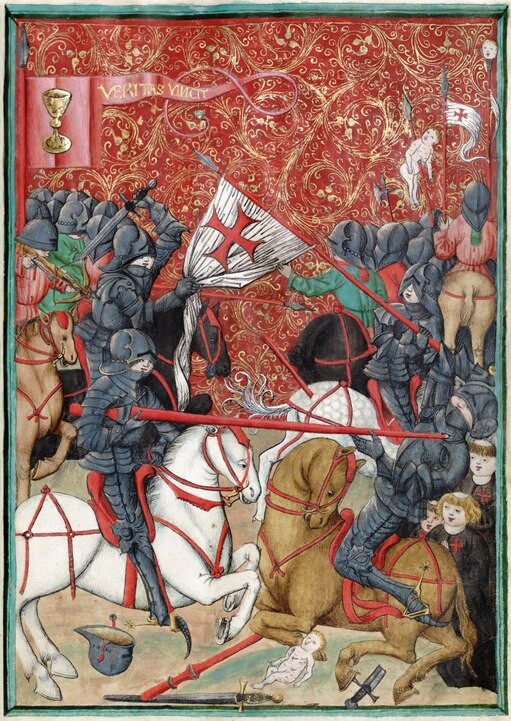The Hussite community included much of the Czech population of the Kingdom of Bohemia and formed a major military power.

The Hussite Wars, also called the Bohemian Wars or the Hussite Revolution, were a series of civil wars fought between the Hussites and the combined Catholic forces of Holy Roman Emperor Sigismund, the Papacy, and European monarchs loyal to the Catholic Church, as well as various Hussite factions. These wars lasted from 1419 to approximately 1434.
The unrest began after pre-Protestant Christian reformer Jan Hus was executed by the Catholic Church in 1415 for openly saying that Jesus Christ alone grants salvation and that Popes do not. Martin Luther, the famous German priest, theologian, author, hymn writer, professor, and former Augustinian Friar was deeply influenced by the writings of Jan Hus. Though Martin Luther was not a Hussite, he acknowledged a connection to his ideas. It was the summer of 1519 at Leipzig, in debate with John Eck, where Martin Luther said those fateful words, “Ja, Ich bin ein Hussite”—I am a Hussite." With this, the gallery exploded with murmurs and shouts of dispute.
The Hussite Wars, a tumultuous chapter in medieval Europe, saw the rise of a military force that would forever alter the trajectory of warfare. The revolutionary approach of the Hussite army to archery was an art form that redefined the battlefield.

In an era where archery was a staple of warfare, the Hussites elevated it to unprecedented heights. Their archers, adept in the art of precision and coordination, unleashed volleys of arrows that painted the battlefield sky. The Hussite archery techniques combined accuracy with speed, creating a symphony of destruction that disrupted enemy formations. What set their approach apart was not only their skill but also the strategic understanding that archery was more than a tool – it was a force multiplier that could reshape the course of battles. As the Hussite arrows rained down upon their foes, chaos ensued amidst the rival ranks. Enemy formations, carefully structured for cohesion and strategy, found themselves scattered and disoriented. The Hussite archers harnessed chaos as a weapon, creating windows of opportunity that their allies swiftly exploited. This orchestrated turmoil was a testament to the Hussites' mastery of not only archery but also the psychology of warfare.
The Hussites' innovative use of archery was a precursor to the role artillery would play in modern warfare. By mastering ranged warfare, they sowed the seeds for the strategic dominance of artillery in later centuries. The calculated disruption caused by their archers foreshadowed the impact of artillery barrages, reshaping the dynamics of battles and forcing adversaries to rethink their approach to combat. The Hussite archers stand as a testament to the transformative power of tactical innovation.
The Hussite Wars were notable for the extensive use of early handheld firearms such as hand cannons and of wagon forts by the Hussites. A Wagon Fort (also known as wagon fortress, wagenburg or corral), often referred to as circling the wagons, is a temporary fortification made of wagons arranged into a rectangle, circle, or other shape and possibly joined with each other to produce an improvised military camp.

The Bohemian Reformation's Hussite movement is considered to be the precursor to the Protestant Reformation. These movements are sometimes referred to as the First Reformation in the Czech historiography.
@ Yeshwant Marathe
yeshwant.marathe@gmail.com
Thanks : Prashant Naik for initial inputs

